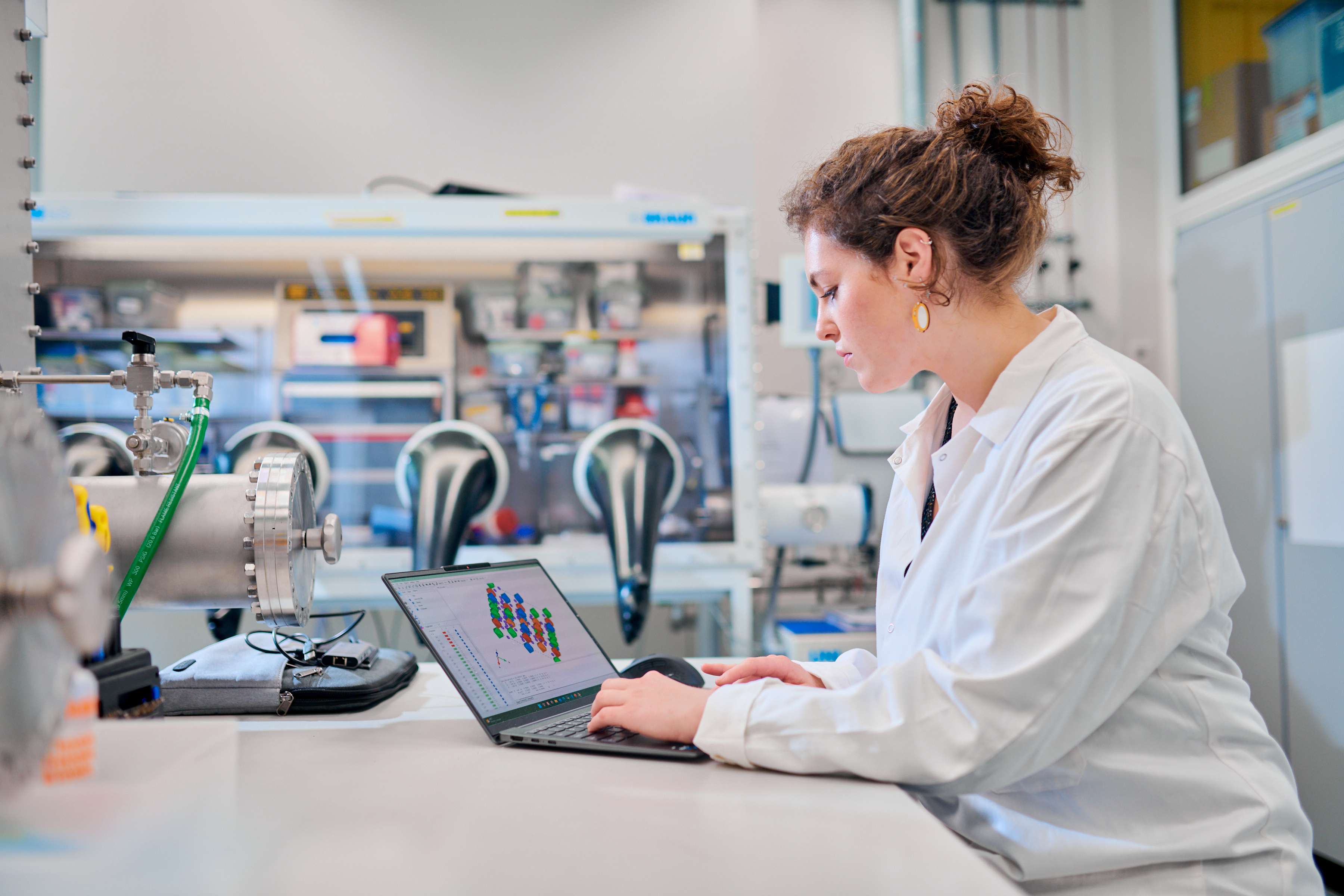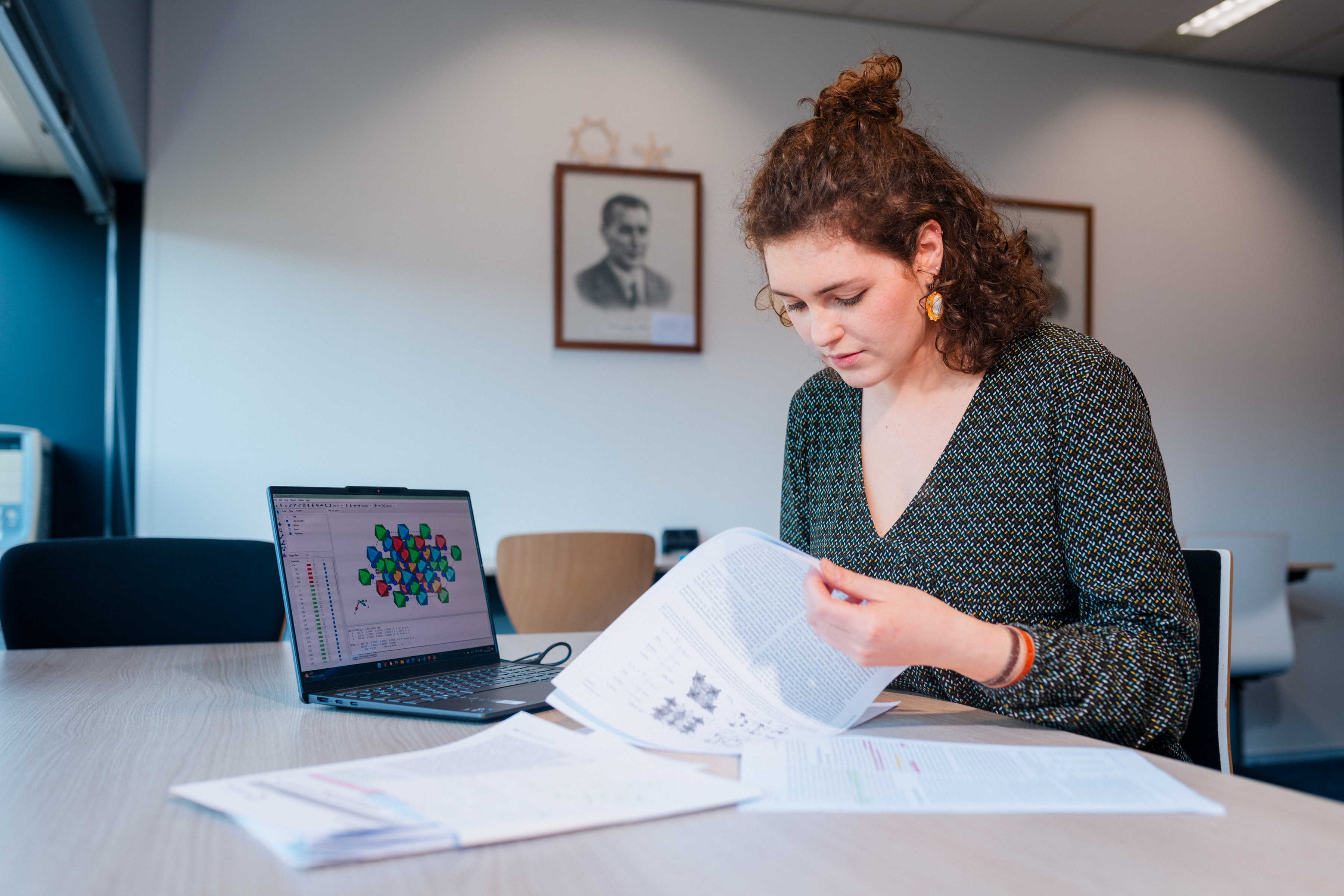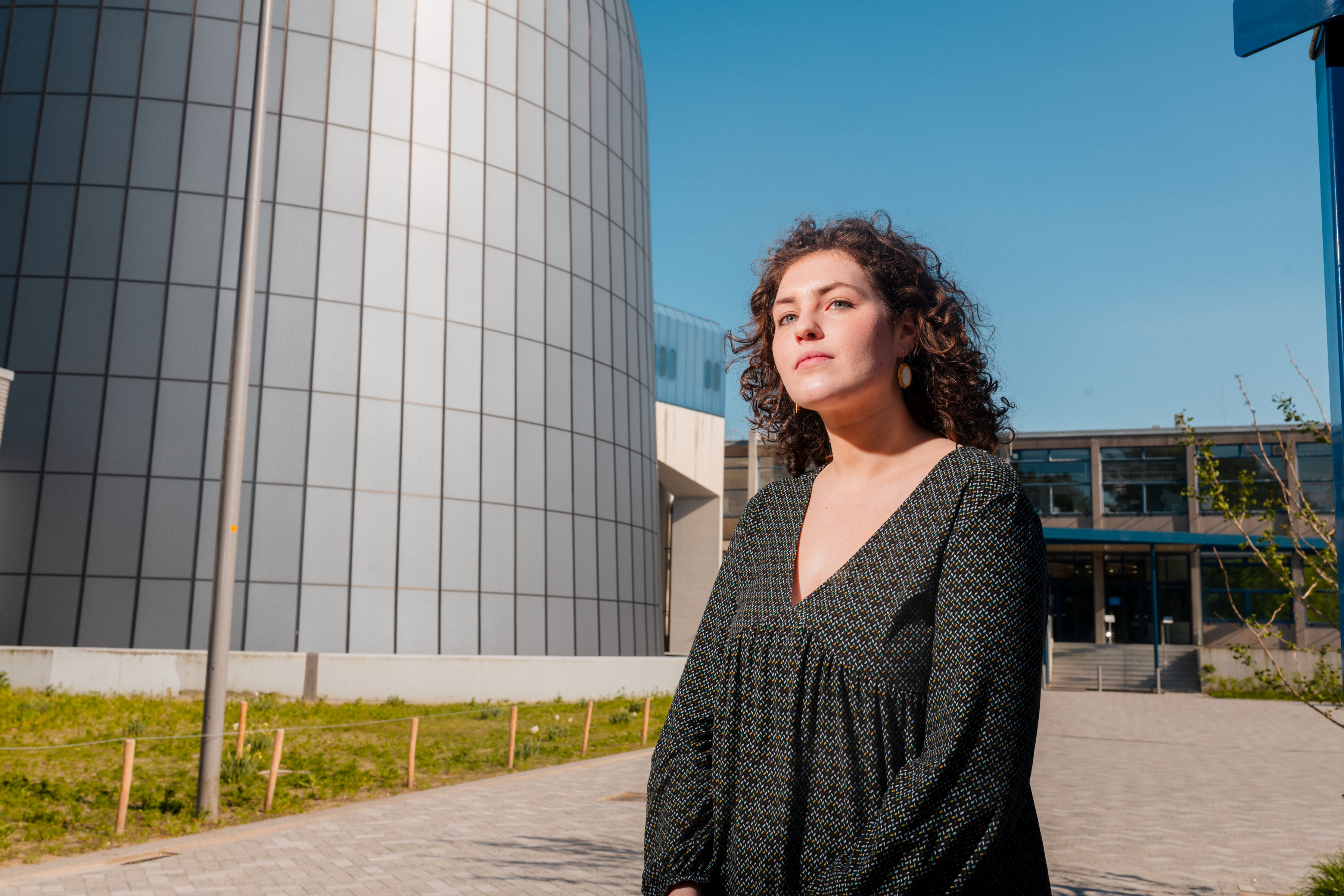For her Master’s thesis, Rita Villar Parajo is researching a chemical compound known as lithium indium-chloride. It is a salt of lithium (Li), indium (In) and chlorine (Cl). This material shows promise as a solid electrolyte for batteries. As part of Marnix Wagemaker's research group, Rita is trying to gain a better understanding of the material’s atomic properties. Rita is also really concerned about the situation in the world. So as part of the Honours programme, she is also looking at the societal impact of mining the materials we so desperately need for the energy transition.
How did you get involved in these projects?
When looking for a Master’s programme TU Delft’s Faculty of Applied Sciences offered a dedicated Physics for Energy track, including a module physics for energy. By making use of course exemptions, I could also enrol for any classes outside of my programme. I took a course on climate ethics at the Faculty of Technology, Policy and Management (TPM), and I studied power conversion for grid integration at Electrical Engineering. All this gave me an overview on the energy problem and helped me decide on a pressing issue I wanted to work on: storage. It is the biggest bottleneck in the energy transition. Without adequate storage, you cannot maintain an equilibrium in an energy system based on renewables, with fluctuating supply and demand. A lecture on battery storage by Alexandros Vasileiadis was right up my street: very physics oriented. I like theoretical and fundamental work, even more so if it is geared towards some real-life objective. Alexandros is now my daily supervisor.
Reading up on my thesis subject, I encountered a dilemma, though. The materials we need, not just for battery storage, but also as catalysts for hydrogen storage and so on, are rare and not easily accessed. So, despite their huge promise energy wise, there are many downsides. Environmentally speaking, their extraction is very energy consumptive and causes serious water pollution. Working conditions are also a concern. I have always been a concerned citizen, if you will, and the climate ethics class really resonated with me. I try to do justice to the ethical side of the matter in an Honours project on the implications of critical raw materials use. Among others, I will be looking at this from the perspective of land use, at the mining of disputed Indigenous territories, for example.
Can you describe your research?
In a battery, the electrolyte is the medium that transfers the ions between the electrodes. Traditional batteries use a liquid medium as an electrolyte. Solid-state batteries are supposed to be safer, with lower risks of fire or explosion. They can also be made smaller and lighter, meaning more environment friendly. I work on lithium-indium chloride, Li3InCl6, a potential electrolyte material for solid-state batteries. To optimise its performance, we need more insight into how the lithium atoms move and behave.
On the Delft Blue supercomputer, we undertake very precise, quantum mechanical calculations of these movements. This has been the gold standard of battery research for over 30 years, but it is very computationally intensive. To give you an idea: a simulation of the behaviour of just 80 atoms under 0.2 nanoseconds takes five days of calculations, solving complex Schrödinger’s equations. Now, with the help of machine learning, we can increase this to thousands of atoms, over longer periods of time, so our simulations come much closer to reality. This is done by training a neural network with lots of data from quantum mechanical calculations, so it will learn to detect patterns in the behaviour of the atoms. Then, with the help of much simpler equations, it can predict the behaviour of atoms much faster.
What is the most important thing that you’ve learned?
In fact, it is not some computational insight into physical phenomena, but rather something at a much higher, systems level. In Spain we have a saying: you cannot pour from an empty cup. Here in the global North, we are struggling to maintain current levels of energy demand and supply. As we do not want to compromise, we must keep coming up with complex alternatives. I think we should face up to the fact that there will be no magical technological solution. We should certainly continue to try our best to create new technologies and improve existing ones –not just by increasing their performance, but also by improving their social and environmental impact. More importantly, we should start trying to find middle ground, and agree on standards of living that are acceptable, achievable and – hopefully – will become universal too.
What are the next steps in your research?
The material I have been working on, lithium-indium chloride, is a halide. In recent years, there has been a lot of interest in halides as promising solid-state electrolytes. However, much remains to be explored, and machine learning can really help us with that. Also, at TU Delft, a lot of battery research is going on, with people studying the subject from different perspectives. On that level there is a potential for more synergy, so we could also factor in those social and environmental implications, for example.
And what did you enjoy the most?
I feel lucky to have been working side by side with people doing high-level research and getting a glimpse into their work. I had been looking forward to that coming to TU Delft. However, I also got unexpectedly hooked on computational work after my first class on it. I really love my programmes, whereas during my bachelor's I had mostly focused on theoretical work.
Tell us about your plans?
I am looking forward to my Honours programme, where I will be taking a socio-technological approach to the subject of critical materials. After that, I will take some time to process everything and to find inspiration for what I want to do next. I would like to continue in research and collaborate on advancing the energy transition in the kindest way possible, still connected to the social and environmental sides of this topic.



